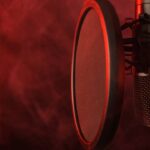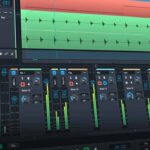When it comes to capturing clean, isolated audio in challenging recording or live performance situations, supercardioid and hypercardioid microphones are the ultimate choice. These highly directional microphones offer excellent rejection of off-axis sound, making them ideal for use in noisy environments or when you need to minimize bleed from other instruments or sources. In this article, we’ll explore the characteristics, advantages, and applications of supercardioid and hypercardioid microphones, helping you understand when and how to use them for optimal results.
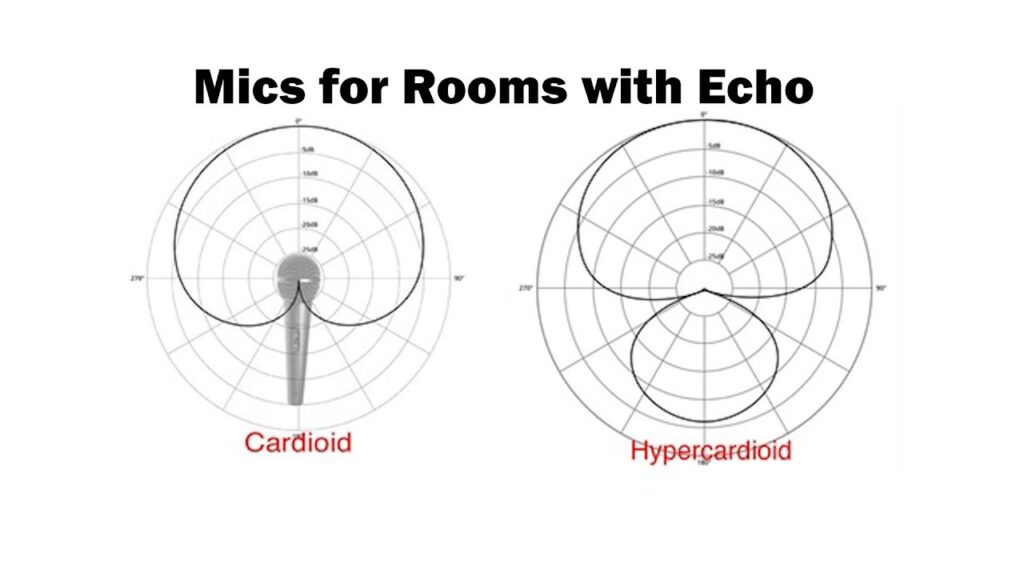
Understanding Supercardioid and Hypercardioid Polar Patterns
Supercardioid and hypercardioid microphones are characterized by their highly directional polar patterns, which are more focused than the standard cardioid pattern.
Supercardioid Polar Pattern
The supercardioid polar pattern is more directional than the cardioid pattern, with a narrower front pickup area and more rejection of sound from the sides. However, it also has some sensitivity to sound directly behind the microphone, known as the “rear lobe.”
How To Understand Microphone Polar Patterns: A Comprehensive Guide
Hypercardioid Polar Pattern
The hypercardioid polar pattern is even more directional than the supercardioid pattern, with an even narrower front pickup area and greater rejection of sound from the sides. However, it also has a more prominent rear lobe than the supercardioid pattern.
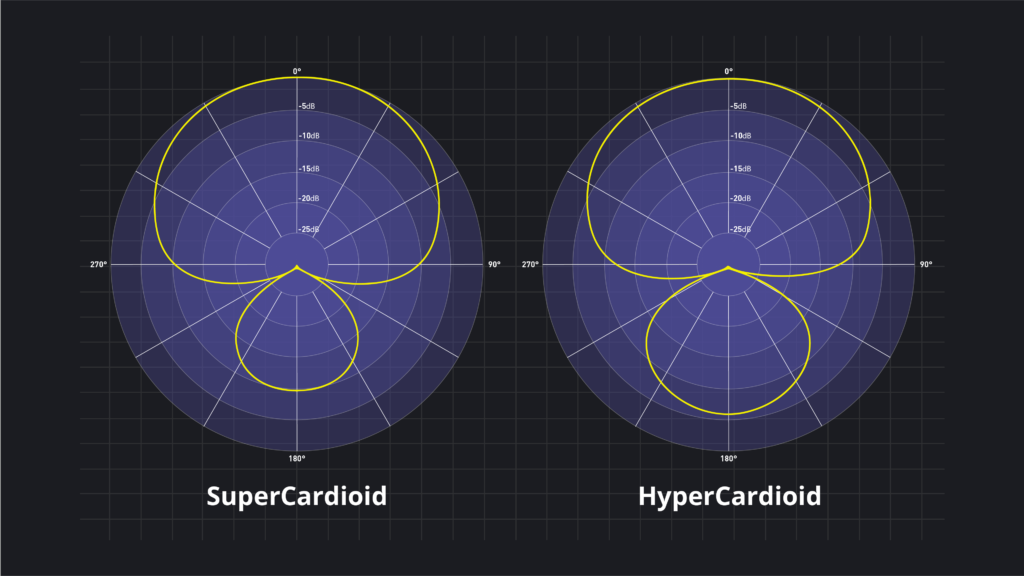
Advantages of Supercardioid and Hypercardioid Microphones
Supercardioid and hypercardioid microphones offer several advantages over other microphone types, particularly when it comes to isolation and feedback rejection:
- Excellent Isolation: The highly directional pickup patterns of supercardioid and hypercardioid microphones allow them to capture the desired source with minimal bleed from other instruments or ambient noise. This makes them ideal for use in noisy environments or when multiple sources need to be isolated from one another.
- Feedback Rejection: Due to their narrow front pickup area and excellent off-axis rejection, supercardioid and hypercardioid microphones are less prone to feedback than other microphone types. This makes them a great choice for live performance situations where high gain levels are required.
- Increased Gain Before Feedback: The directional nature of supercardioid and hypercardioid microphones allows for higher gain levels before feedback occurs, providing more headroom and clarity in live sound reinforcement.
- Improved Signal-to-Noise Ratio: By rejecting off-axis sound and focusing on the desired source, supercardioid and hypercardioid microphones can help achieve a better signal-to-noise ratio, resulting in cleaner, more professional-sounding recordings or live mixes.
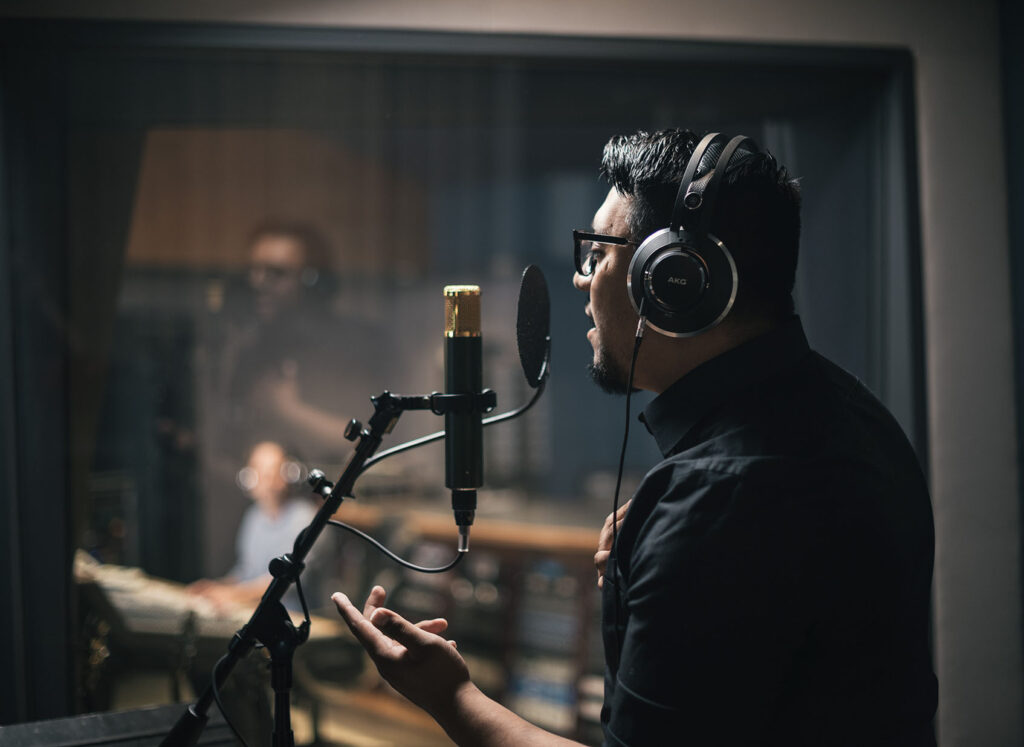
Applications of Supercardioid and Hypercardioid Microphones
Supercardioid and hypercardioid microphones are well-suited for a variety of recording and live performance applications where isolation and feedback rejection are critical:
- Live Sound Reinforcement: Supercardioid and hypercardioid microphones are commonly used for miking vocals, instruments, and amplifiers in live sound situations. Their directional pickup patterns help minimize bleed from other sources and reduce the risk of feedback.
- Recording in Noisy Environments: When recording in less-than-ideal acoustic spaces or in the presence of unwanted noise, supercardioid and hypercardioid microphones can help capture clean, focused audio by rejecting off-axis sound.
- Isolating Individual Instruments: In multi-track recording situations, supercardioid and hypercardioid microphones can be used to isolate individual instruments or sources, minimizing bleed and ensuring clear separation between tracks.
- Film and Television Production: Supercardioid and hypercardioid microphones are often used in film and television production to capture dialogue and sound effects while minimizing unwanted noise from the environment or off-camera sources.
Techniques for Using Supercardioid and Hypercardioid Microphones
To get the most out of your supercardioid and hypercardioid microphones, consider the following techniques:
- Positioning: Take advantage of the microphone’s directional pickup pattern by carefully positioning it to focus on the desired source while minimizing pickup of unwanted sound. This may involve using a microphone stand or boom to achieve the optimal placement.
- Proximity Effect: Like cardioid microphones, supercardioid and hypercardioid mics exhibit the proximity effect, which results in an increase in bass response when the source is close to the microphone. Be aware of this effect and use it to your advantage, or compensate for it with EQ if necessary.
- Rear Lobe: Remember that supercardioid and hypercardioid microphones have some sensitivity to sound directly behind the microphone (the rear lobe). Position the microphone to minimize unwanted pickup from the rear, or use acoustic treatment to control reflections and reduce the impact of the rear lobe.
- Windscreens and Pop Filters: When using supercardioid and hypercardioid microphones for vocal recording or live performance, consider using a windscreen or pop filter to reduce plosives and wind noise, which can be more pronounced due to the microphone’s directional nature.
The Best Microphone Selection for Vocal Recording
Popular Supercardioid and Hypercardioid Microphones
There are many excellent supercardioid and hypercardioid microphones available on the market, suitable for a range of applications and budgets. Some popular choices include:
- Shure Beta 87A (Supercardioid): A premium vocal microphone designed for live performance, offering exceptional clarity, feedback rejection, and off-axis rejection.
- Sennheiser MD 441-U (Supercardioid): A versatile dynamic microphone that excels at capturing vocals, instruments, and amplifiers in both live and studio settings.
- AKG C451 B (Hypercardioid): A small-diaphragm condenser microphone that offers excellent transient response and off-axis rejection, making it suitable for a wide range of recording applications.
- DPA 4018VL (Supercardioid): A premium vocal microphone designed for live performance, offering exceptional clarity, feedback rejection, and off-axis rejection in a compact, lightweight design.
For more recommendations, check out our article on the The Ultimate Choice for Isolation: Supercardioid and Hypercardioid Microphones
Conclusion
Supercardioid and hypercardioid microphones are the ultimate choice for achieving excellent isolation and feedback rejection in challenging recording and live performance situations. By understanding the characteristics, advantages, and applications of these highly directional microphones, you can make informed decisions when selecting the right mic for your specific needs.
Remember, while supercardioid and hypercardioid microphones are powerful tools for capturing clean, focused audio, they are just one part of the equation. Proper microphone technique, placement, and processing are also essential for achieving professional-sounding results.
Happy recording and performing!

